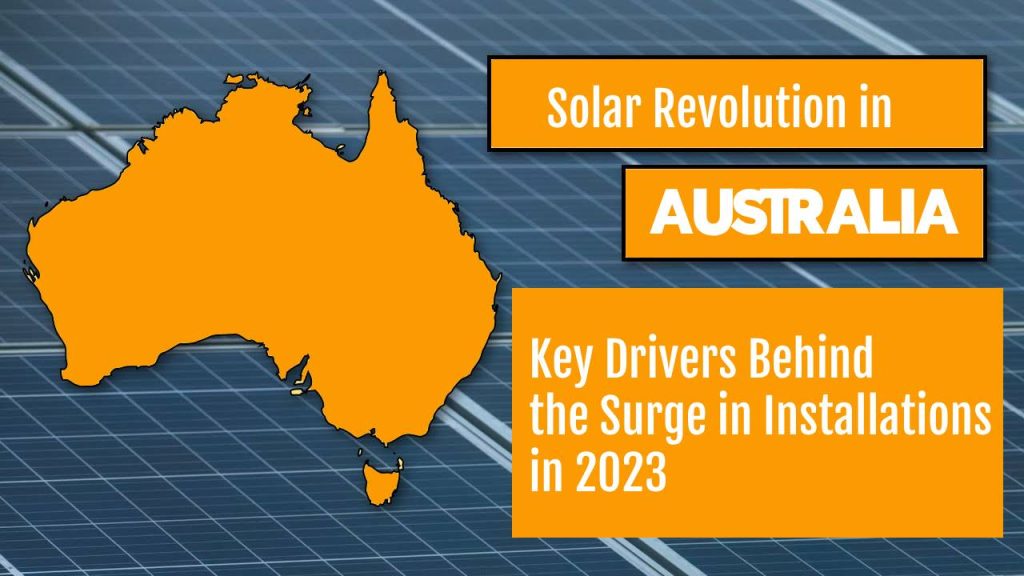
In 2023, Australia experienced unparalleled growth in the installation of rooftop solar PV systems unlike anything it had seen before. […]
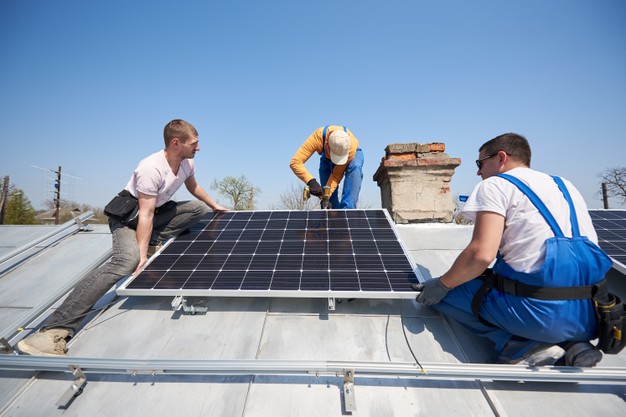
The growing energy crisis and worldwide economic inflation are pushing people to seek renewable energy sources that can replace fossil fuel energy production and maintain a secure and stable flow of electricity to households and businesses.
These recent events, coupled with growing environmental concerns, are further promoting the case for alternative energy sources. Home solar systems are great alternative sources of electricity that gained a lot of popularity recently.
Households, businesses, transportation entities, as well as giant industries are gradually switching towards solar energy systems to meet a percentage or even all their electricity needs.
According to Energy gov, the amount of light that reaches the earth’s surface in one hour and a half is enough to meet the entire world’s energy consumption for a whole year. Solar technology makes use of the potential solar energy to generate electricity that can be regularly and sustainably used.
A residential solar system is an advanced technology system that harnesses solar energy from the sun and converts it into electrical energy. The electricity produced can power different operational requirements, applications and machines in households, offices, and industries.
Solar power systems include Photovoltaic panels, Direct current (DC) to alternate current (AC) power inverters, mounting racks for fixing the PV panels, in addition to other accessories and electronics.
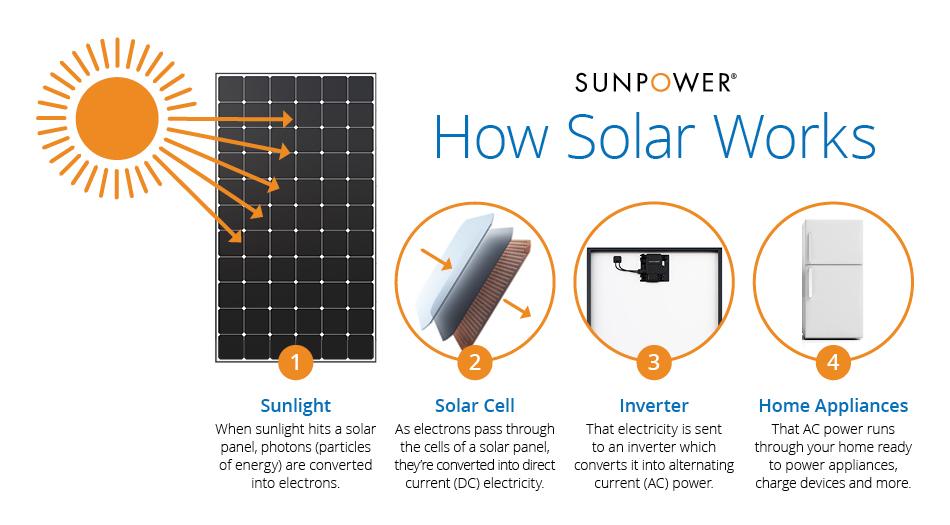
Home solar systems are typically installed on roofs for maximum sunlight exposure, and they are positioned in a way to face the sun to ensure optimal sunlight collection and maximum power generation from the system.
Solar energy within the sun’s light rays strikes the surface of PV panels, producing DC current that is converted to alternating current when passed through an inverter, to be used for different applications and appliances throughout the house.
Before proceeding with buying and installing a solar energy system, it is important to understand the details of the system and the individual components, and know how these components communicate and interface with each other. The major components of a residential solar system are:
PV Panels also called solar panels are installed on the roof and are the most essential and noticeable component in the system. The panels convert solar light energy into electric energy through a photovoltaic mechanism.
PV panels are available in a number of sizes and capacities, rated in Watts, which determine the maximum power that can be generated from the panel under ideal conditions.
Solar panels are generally installed in arrays and are mounted on roofs or other free surfaces, and they are fixed to the surface by solid mounting racks that can either be fixed or flexible for tracking purposes.
Fixed racks allow the positioning of the panel in a fixed direction and angle whereas tracking-friendly ones allow the position of the panels to be automatically adjusted to follow the sun direction.
Solar panels and batteries produce power in the form of Direct current (DC), while home appliances require alternating current (AC). Inverters are key components that can convert DC to AC in order to properly operate home appliances.
Wires transmit the produced electrical energy from the panels to batteries and from the inverter to the main panelboard fuse box, to allow the different appliances and fixtures to draw electricity without the need for new distribution within the house.
All these components are connected to each other to produce a residential solar system that can smoothly and conveniently convert solar energy to electricity that can feed electrical appliances.
Home solar systems have played a major role in revolutionizing the Global Energy Industry. Apart from specific energy-intensive applications and purposes, they have been frequently used in homes to meet energy demands.
And there is a good reason for their popularity and exponential growth in the past few years. Most notably, home solar systems are great to ensure an efficient and sustainable energy supply that is also environment-friendly.
This section will tackle the top 10 facts of the home solar system that you should know, to help your decision process on whether you wish to employ such a system for your house.
Home solar systems are an environment-friendly source of generating electricity. Power generation through solar panels is a green process that does not emit any smoke, gases or chemicals, and does not lead to environmental hazards.
For over 100 years, several sources of electricity have been used to meet an exponentially growing energy demand. The standard sources have included burning fossil fuels, steam production, nuclear energy, among others.
However, most of the non-renewable sources used over the years have led to high emissions and a worsening environmental crisis.
These emissions have aggravated global warming and the worldwide climate crisis. Greenhouse gases that are emitted from the processing of traditional energy sources have contributed to the phenomenon of trapping heat and CO2 in the atmosphere.
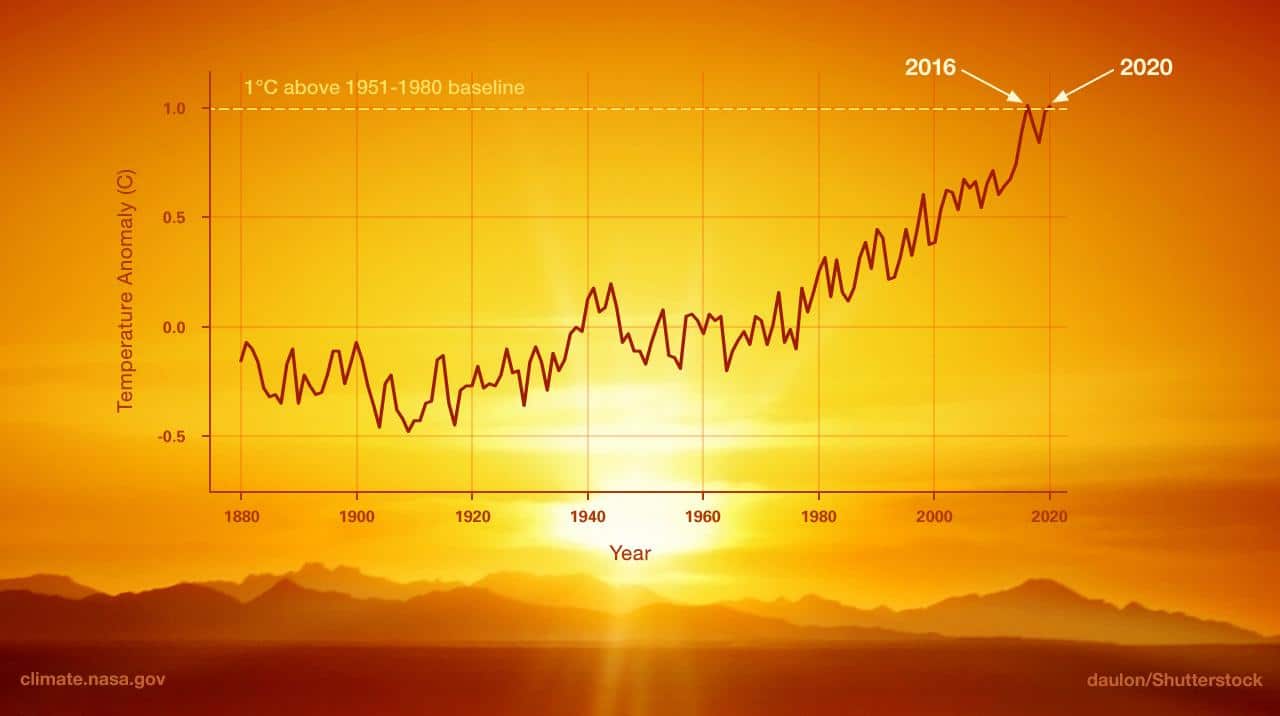
Moreover, the growing worldwide energy demands have led oil companies to explore and extract fuel from land and sea reserves, which results in disrupting natural habitats and destruction of green spaces, worsening the environmental crisis. Fossil fuels are also non-renewable sources of energy that will eventually deplete.
All these downsides of traditional energy sources are met, on the other hand, with safe and environmentally friendly electricity generation from home solar power systems.
The operation of solar panels involves absorbing sunlight and transforming photons into electrical currents that are ready for use, with no harmful effects on nature.
Some of the best investment options available require a one time financial investment with accumulating and long lasting returns on investment (ROI), and that is the case with solar power generating systems.
People always look for budget-friendly electricity generation sources that are both economical and efficient.
Home solar power systems are “one-time investment” systems for electricity generation, compared to conventional energy sources, that require consistent and regular operational and maintenance expenses to ensure their proper operation.
Traditional sources require a continuous flow of raw materials and their complex transport, shipping and processing, as well as complicated labor and operational needs, and intensive human labor to meet these operational tasks.
As a result, traditional sources of electricity production incur massive expenses.
On the other hand, home solar systems only require a one-time investment to purchase and install the components, but do not require any recurring material or operational costs, and their maintenance is a very simple task.
Effectively, these solar systems shine as highly economical and efficient sources to generate electricity for home use.
According to the World Economic Forum, the costs of renewable energy sources have been consistently dropping, and are expected to drop further, with the cost of large-scale solar projects dropping by 85% over the last decade.
It is often confusing for direct customers to understand the cost breakdown of the state electricity bill, or to find justifications for the inflated unit charges and the fluctuating rates.
A major reason behind the complex breakdown is due to the fact that state energy sources have a centralized operation.
Conventional electricity sources run on raw materials, and since many cities and countries do not have the self-sufficiency to produce raw materials to meet needs, the materials, fuels, and technical tools have to be transported across continents and countries.
This process of procurement, supply chain and transport adds an immense cost to the energy production cost. Solar power systems, on the other hand, avoid all these additional monetary expenses.
Home solar systems are decentralized sources of electricity generation which can be applied to homes, blocks and throughout cities, leading to self-reliant communities on a broader scale.
With solar power systems, you can avoid all the additional procurement and supply chain fees and free your energy costs from fluctuating costs that are outside your control.
Off-Grid generation of electricity is a major benefit of home solar power systems, allowing the home to disconnect from the state national grid. People residing in remote areas, particularly villages, usually suffer from an under-developed power infrastructure.
They either completely lack an on-grid connection of electricity or the infrastructure is very poor, as connection with distant grids leads to large voltage fluctuations and frequent power cuts.
Home solar systems are a great alternative for these areas to ensure efficient off-grid power generation.
Homes powered through solar power systems don’t need a connection with the state grid supply, making the homes and buildings self-reliant, instead of being dependent on grid supply.
Off-grid power generation by home solar systems is becoming popular in urban and distant settings, especially for adopting self-reliance and avoiding sky-high utility bills from the state grid.
The economies of all countries rely heavily on generating jobs and economists and legislators globally struggle to find means for job creation.
Countries with industries that promise consistent jobs and vacancies tend to prosper economically, and the home solar power system industry has become a highly attractive job industry.
Wherever solar technology is increasing in popularity among customers, it is leading to the creation of jobs. Solar power technology is creating jobs in manufacturing, construction, installation, operations, and management.
Research has demonstrated that electricity-related jobs will increase from 21 Million in 2015 to 35 Million by 2050.
During this time, the major job-creating technologies would include Solar PV panels, batteries, and wind power.
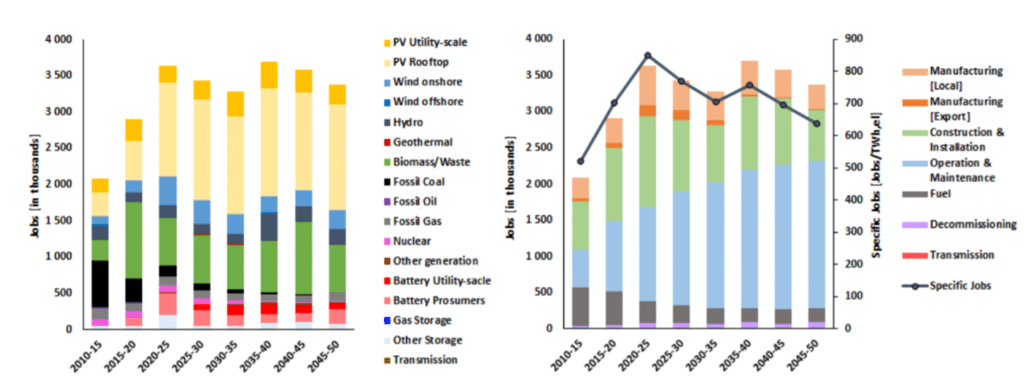
A new JRC report shows that in more than half of the coal regions of the European Union where coal is being replaced by clean energy sources, this switch is creating more jobs than what currently exists in the coal sector.
The incorporation of renewable energy technologies can create 3,15,000 jobs by 2030 and up to 4,60,000 jobs by 2050.
People worldwide suffer from inflation due to increased fuel prices on the international market.
This is a direct result of traditional, centralized energy sources that are vulnerable to shifts in the global economy. This price volatility often leads to increased energy costs and heightened electricity charges.
Home solar systems help avoid the financial impact of global economic crises, as operational systems do not require fuel and raw material, and inflation of fuel prices in international markets has no impact on power generation.
At times, state restrictions and global circumstances, causes impedance for imports and exports, with the COVID-19 pandemic as a perfect example of such a crisis.
Restrictions and affected supply chains also contribute to price increases, unstable demands and worldwide energy crises.
In such a scenario, home solar systems can help prevent the economic impact and the resulting inflation.
They not only provide a constant supply of electricity but also safeguard your finances against global instability.
Solar panel efficiency is a measure of the potential of solar panels to convert solar energy to usable electricity. Home solar systems are undergoing ongoing research and advancements to become more and more efficient.
This makes them more capable to optimally transform light to electricity.
According to EnergySage, the most efficient solar panels available on the market have an efficiency rating as high as 22.8%, while the more commonly available solar panels fall within an efficiency range between 16 and 18 percent.
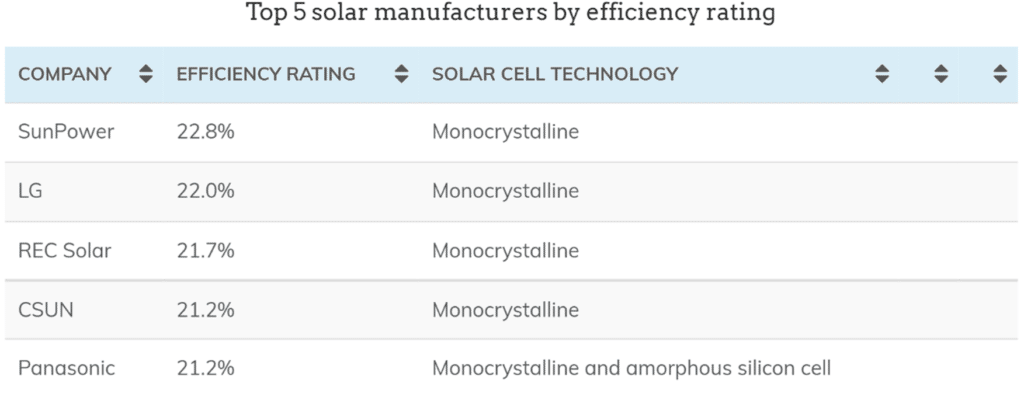
This efficiency allows home solar systems to provide efficient production of electricity, which is particularly useful for rural and remote areas where infrastructure is compromised. In such areas, solar panels provide a consistent and stable electricity supply.
Several factors affect the efficiency of home solar systems. These include:
The material of the Photovoltaic (PV) panels greatly influences the efficiency of solar power systems. Panels can be made of silicon, cadmium telluride, or thin films.
Reflection of light away from the solar panel impacts the overall efficiency of home solar systems, which is why silicon solar cells have a glass covering to the panel to ensure optimum efficiency.
Photons of light striking a panel exhibit various optical phenomena. Some are reflected, some are absorbed, and the photons with optimal wavelength pass through the cell and can be transformed into electricity.
One of the most important factors in panel efficiency is its positioning and angle.
You should properly study the sun pathway in your specific location and position the panels in a way that they face the sun for an extended period to convert maximum solar energy. Tracking systems on mounting racks can be a great addition to optimize and increase the exposure and energy generated.
Climatic conditions have a direct impact on the efficiency of home solar power systems.
Panels have a lower efficiency in locations with cloudy and rainy weather with reduced sunlight exposure. On the other hand, places with extended sunny days and dry weather enhance the panel efficiency and generate more electricity.
The specific climatic factors of your location are essential to consider before installing a home solar power system in order to have a high-efficiency energy conversion. This would generate maximum electricity with minimal costs invested and ensure long-lasting returns.
Another great fact about home solar systems is their durability and long lifetimes. Studies have shown that solar panels generally operate for more than 25 years. They can even operate beyond this time frame, but their efficiency can become compromised.
This long lifetime is a key feature which explains why solar panels have become so popular for meeting energy needs. A one-time investment in the purchase and installation cost, can guarantee a staggering 25 year supply of energy and savings from state electricity bills.
The durability of home solar power systems is further enhanced with accompanying warranties.
According to the renewable energy hub, manufacturers offer warranties of varying time periods, with most companies offering a 10-year limited product warranty that covers both the material and labor cost.
This makes home solar systems safe to use with long lifetimes, and the decade-long warranties guarantee peace of mind for the customer.
One major obstacle to the widespread adoption of home solar power systems is related to energy storage.
According to solar impact, lack of storage makes solar panels unable to supply electricity in the absence of sun, at night or during storms.
To mitigate this effect, and to ensure that the system provides energy throughout the day and night, and during any conditions, you will need to install external batteries.
On dark days with minimal sunlight intensity, the panel’s energy production capability becomes greatly diminished, compromising the energy-producing potential of the panels.
This is a major drawback of using home solar power systems on their own, but systems that interface with the state grid supply do not suffer from this problem as solar panels fulfill daytime needs while the state grid complements nighttime use.
Despite the many beneficial facts and features of solar systems, they do pose certain health hazards that need to be taken into account.
They are considerably much safer and healthier energy sources than conventional energy sources, however, the manufacturing process of solar panels involves some common heavy metals including cadmium, gallium, selenium, etc.
These chemicals, if ingested or inhaled by workers during the manufacturing process, can have negative health implications.
That’s why ensuring high levels of safety precautions and standards during the fabrication helps prevent such accidents.
According to AFAC National Council for Fire and Emergency Services, solar cells contain carcinogens like cadmium Telluride and Gallium Arsenide, as well as phosphorus. These nanoparticles can result in silicosis of the lungs if ingested.
As such, the chemical compounds in home solar systems can lead to a risk of developing cancer.
However, according to the World Health Organization, exposure to low-level electromagnetic fields poses no risk to human health.
Although there are certain health hazards that result from the manufacturing and improper disposal of home solar systems, they are negligible compared to conventional energy sources, and can be easily avoided by practicing safe material handling and relevant precautionary measures.
Home solar systems can greatly meet household energy use in a time of high energy costs and sky-high global inflation. These solar panel systems require a one-time investment with consistent returns on investment that last for decades.
Although home solar power systems face certain setbacks from intermittent production, lack of storage and some manufacturing hazards, overall they guarantee efficient and sustainable electricity generation.
Home solar power systems are not only an environmentally friendly energy source but can also assist in the development of self-reliant communities.